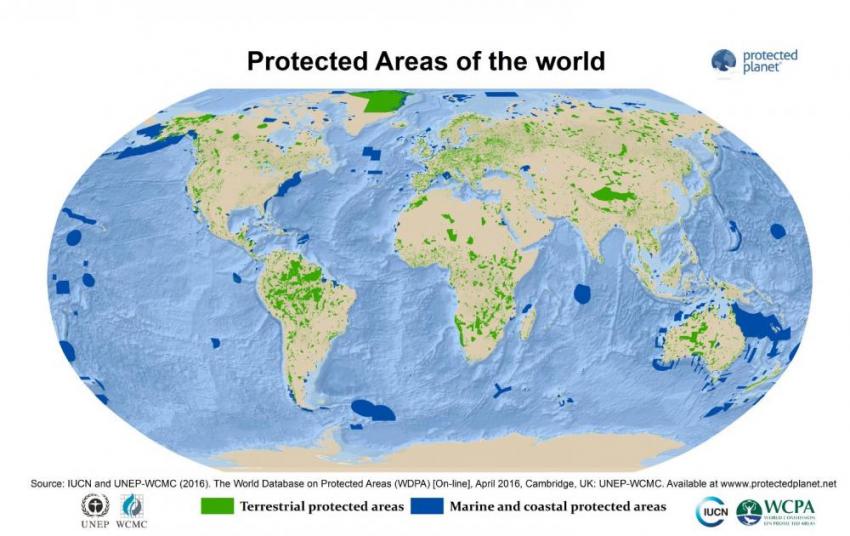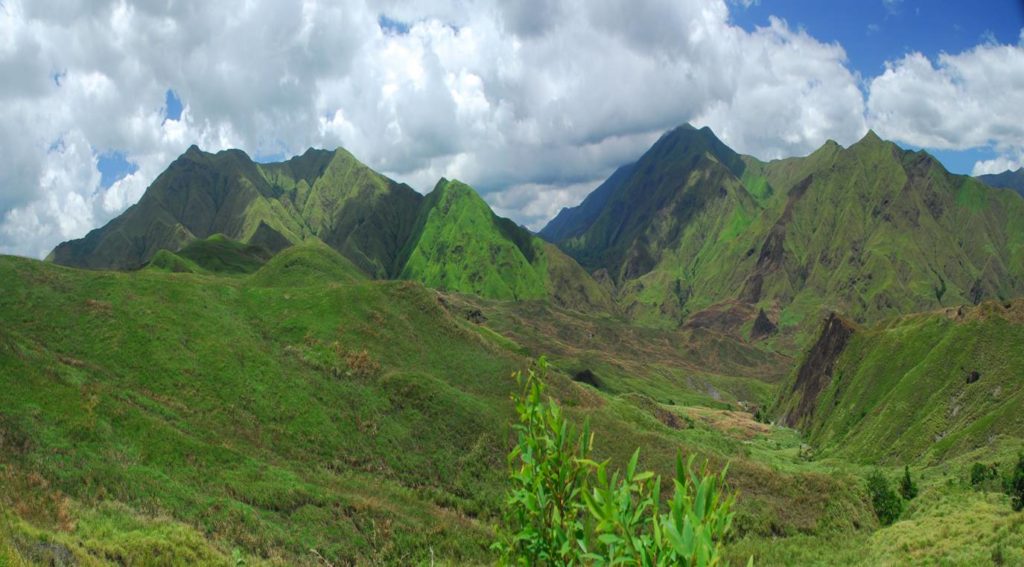
Protected areas – national parks, wilderness areas, community conserved areas, nature reserves and so on
– are a mainstay of biodiversity conservation, while also contributing to people’s livelihoods,
particularly at the local level.
Protected areas are at the core of efforts towards conserving
nature and the services it provides us – food, clean water supply, medicines and protection from the
impacts of natural disasters.
Their role in helping mitigate and adapt to climate change is also
increasingly recognized; it has been estimated that the global network of protected areas stores at
least 15% of terrestrial carbon.
The IUCN Global Protected Areas Programme:
IUCN’s Programme on Protected Areas has a long heritage in the Union, with a headquarters-based core team
and regional staff, and a closely coordinated programme of activities with the World Commission on
Protected Areas (WCPA).
An IUCN-commissioned External Strategic Review of the IUCN Programme on
Protected Areas was concluded in 2010, making far-reaching recommendations for the revised objectives
and functions of a new Global Programme on Protected Areas (GPAP).
These included the establishment
of a separately managed World Heritage Programme, the appointment of a new Director, Trevor Sandwith, in
2011, and the strengthening of the programme through prioritized budget support.
Contents
- Priorities and programme areas:
- 1)Valuing and conserving biodiversity
- 2)Governing nature’s use and sharing its benefits equitably
- 3)Deploying nature-based solutions to global challenges
- Natural World Heritage sites
- Wilderness Area

Priorities and programme areas
The Global Protected Areas Programme implements the IUCN Programme for 2017-2020 across all programmatic
elements.
Protected Area systems are both ENDS (protected areas directly conserve genetic resources,
species, ecosystems and ecosystem processes) and MEANS (to enable many other thematic conservation
objectives through in situ implementation, governance and equitable sharing).
The priorities of the
GPAP will help deliver IUCN’s 2017-2020 Global Programme. Within the three programmatic elements of
IUCN’s new quadrennial programme, GPAP has three priority areas as outlined below.
1)Valuing and conserving biodiversity
GPAP will measure progress towards the attainment of biodiversity conservation targets in the Strategic Plan for Biodiversity, especially the Aichi Biodiversity Target 11, where national governments have committed to establishing protected area systems that are ecologically representative and that conserve areas that are important for biodiversity conservation and ecosystem services, that are well-connected, effectively and equitably managed, and integrated into the wider landscape and seascape.
2)Governing nature’s use and sharing its benefits equitably
No protected area system could be established or managed without the participation and involvement of
people. In this programme area, there will be a focus on two main themes.
Firstly, the programme
will work towards much greater implementation of issues regarding protected area governance, including
the assessment and recognition of the variety of governance types for protected area systems, and the
diversity and quality of governance at the system and site levels.
These embrace the full suite of
protected areas conserved by governments, by indigenous peoples and local communities, by private actors
and many cases where these are combined as shared governance, including through multiple agency
governance at the landscape scale and transboundary governance across the boundaries of sovereign
states. Secondly, the programme will focus on the issue of social assessment for protected areas, the
recognition of the rights to benefits, and the distribution of costs and benefits of the establishment
and management of protected areas.
The entry into force of the Nagoya Protocol on Access and Benefit
Sharing will have implications for social assessment for protected areas.
3)Deploying nature-based solutions to global challenges
Maintenance of ecosystem resilience is an essential prerequisite for maintaining resilient socio-economic
systems in the face of global change, and an expanded connected network of well-managed conservation
areas is the most robust proven solution to confront these problems. Simply put, large healthy protected
ecosystems conserve biodiversity and address climate change impacts directly and indirectly.
Evidence of their value in many sectors is increasing in quality and substance, including for health
promotion, food security, water provision, disaster and risk reduction, poverty alleviation and for
dealing with the causes and impacts of climate change on ecosystems and society.
Protected areas,
especially when considering the full suite of management categories and governance types, is the
foundation for maintenance of ecosystem integrity and for restoration efforts at the scale of the
landscape and the seascape.
Finally, all of these priorities were a focus of the 6th IUCN World Parks
Congress 2014 where the host country and host state (Australia and New South Wales) will provide a
platform for the IUCN Global Protected Areas Programme in its widest sense, to envisage the future
beyond 2025 and begin now to design responses that will ensure that protected areas are a positive and
relevant force and priority for investment in the decade that follows.
Natural World Heritage sites
Natural World Heritage sites are recognised as the planet’s most important protected areas, providing
life-supporting benefits to millions of people worldwide. And yet, they are under increasing pressure
from climate change, infrastructure development, mining, poaching and other threats.
IUCN is the official advisor on nature to the UNESCO World Heritage Committee. IUCN evaluates sites
nominated for the World Heritage List and monitors the state of conservation of listed sites. IUCN aims
to improve the management of World Heritage sites and enhance the role of the World Heritage Convention
in nature conservation and sustainable development.
Wilderness Area
Protected areas that are usually large unmodified or slightly modified areas, retaining their natural
character and influence, without permanent or significant human habitation, which are protected and
managed so as to preserve their natural condition.
Primary objective
To protect the long-term ecological integrity of natural areas that are undisturbed by significant human
activity, free of modern infrastructure and where natural forces and processes predominate, so that
current and future generations have the opportunity to experience such areas.
back to top
